Ticks might seem like something you only have to worry about in sagebrush country or deep in the woods. But, ticks in Maryland are just as prevalent as in any other part of the country. Ticks live on all seven continents (even Antarctica!), and they aren’t going away any time soon. In fact, a combination of factors (including global warming) has led to an explosion in the population of ticks throughout North America.
That’s why, now more than ever, it’s important to know your ticks and how to avoid them. Here, we’ll go over the six types of ticks in Maryland. We’ll cover what they look like, where they hang out, and what diseases and pathogens each species carries.
Keep reading to learn about the one species of tick in Maryland that spreads Lyme disease and much more.
1. American Dog Tick (Dermacentor Variabilis)
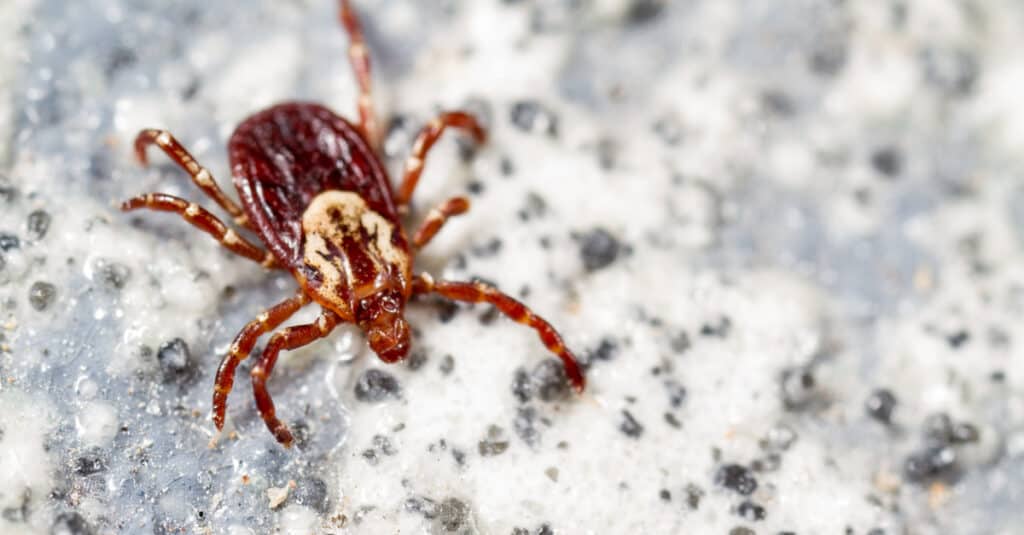
American dog ticks are members of the family of hard-bodied ticks.
©Elliotte Rusty Harold/Shutterstock.com
American dog ticks are dark brown. Females have a white scutum (the hard shield that covers the upper half of their back), and males have white mottling across their bodies. These ticks are the primary vector for Rocky Mountain spotted fever, which they can pass to both humans and dogs. They’re found in open fields and tend to wait on the tips of tall grass for potential hosts to brush by.
2. Gulf Coast Tick (Amblyomma maculatum)

Gulf coast ticks live along the Gulf Coast as far north as Maryland.
©iStock.com/cturtletrax
Gulf coast ticks are one of the most common ticks in Maryland. They have red-brown legs with darker-colored bodies. Males have overall pink mottling, while females only have pink coloring on their scuta. These ticks have long, visible mouthparts. Gulf coast ticks prey mostly on large animals, like cattle, but will also bite humans or dogs if they get the chance. They tend to congregate in fields and at the edges of forests.
Like the American dog tick, the gulf coast tick transmits Rocky Mountain spotted fever, as well as tick paralysis and Rickettsia parkeri.
3. Lone Star Tick (Amblyomma americanum)
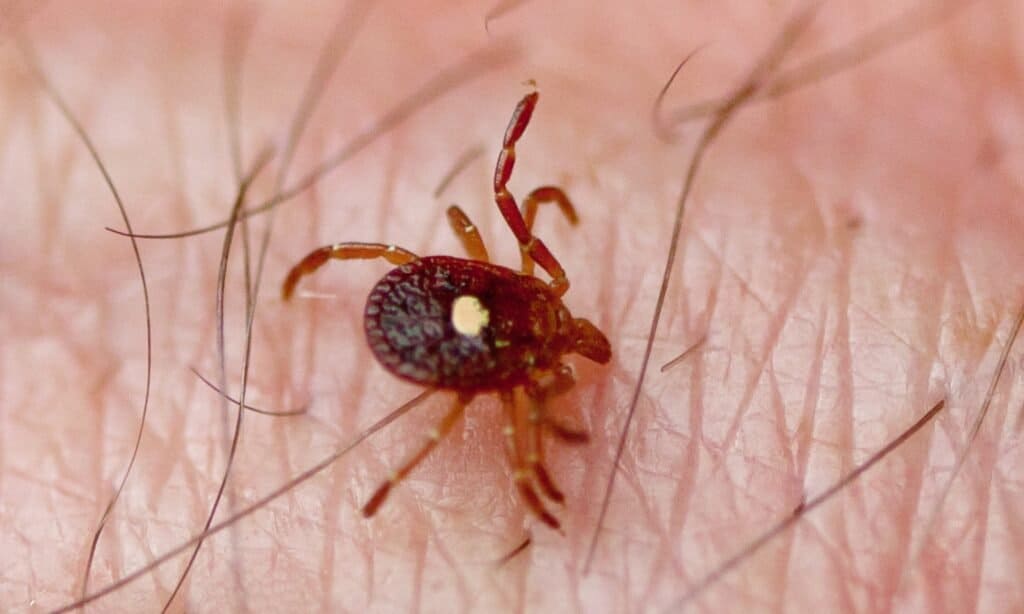
Lone star ticks will feed on any creature that crosses their path.
©iStock.com/epantha
Lone star ticks are some of the most recognizable ticks in Maryland. Females are brown, with a single, tan ‘lone star’ marking in the center of their backs. Males have tan mottling and may be slightly harder to identify. These ticks are the primary vector of human monocytic ehrlichiosis. Unlike other species of ticks, lone star ticks have no host preference and will feed on any creature that happens across their path. Lone star ticks live primarily in wooded settings and feed mainly on white-tailed deer.
4. Deer Tick (Ixodes scapularis)
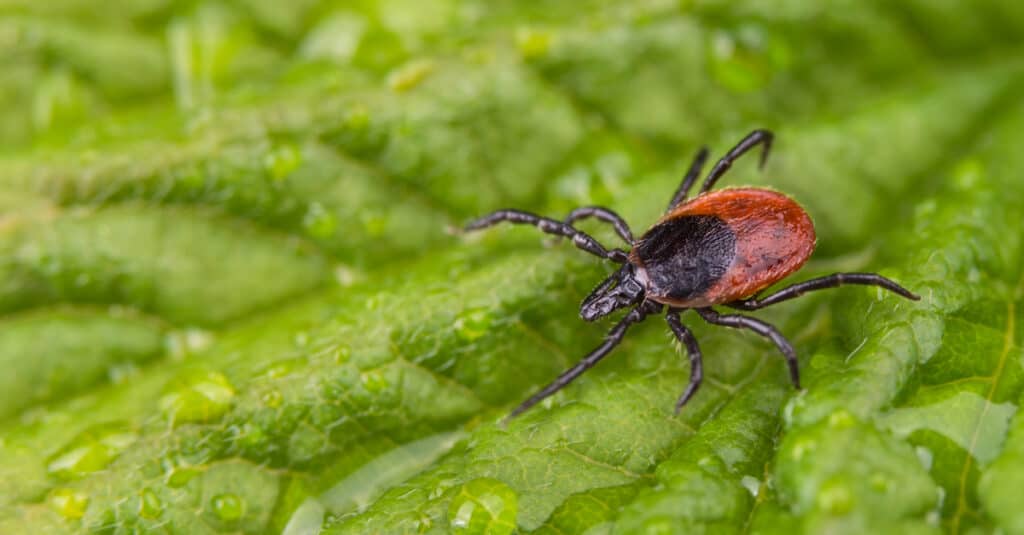
The deer tick is a member of the hard-bodied tick family.
©KPixMining/Shutterstock.com
Not only are deer ticks one of the most common species of ticks in Maryland, but they’re also one of the most common species of tick in the United States. Commonly known as the black-legged tick, these ticks are easily identifiable by their black legs and red-brown bodies. They’re the only species of ticks in Maryland with black legs. Unfortunately, they’re also capable of passing Lyme disease to humans.
Deer ticks prefer the blood of white-tailed deer but won’t say no to human blood. They’re most common in second-growth forests and the edge zones between woods and fields.
5. Asian Longhorned Tick (Haemaphysalis longicornis)
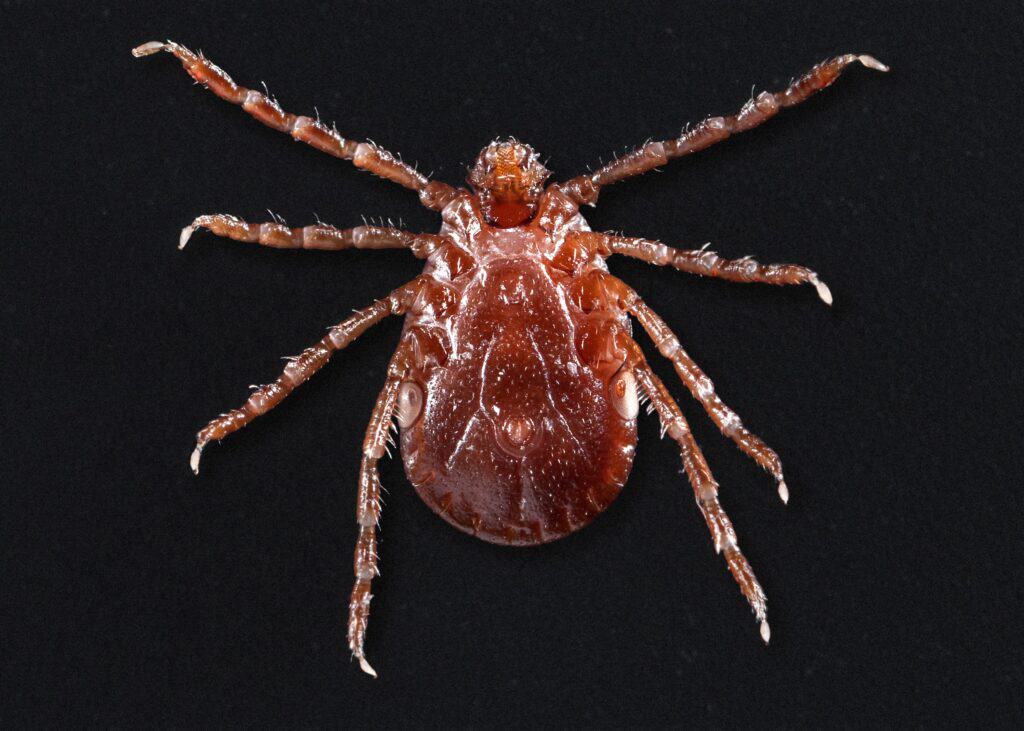
Asian longhorned ticks are three-host ticks.
Though not common in Maryland, the Asian longhorned ticks are one of the six ticks in Maryland. These ticks are red-brown in color, with large, oval-shaped bodies and small heads. Both their bodies and legs are red-brown. Like most species of ticks in Maryland, Asian long-horned ticks are three-host ticks. This means that they feed from one host per life cycle (larva, nymph, adult). Asian longhorned ticks may feed on any number of species, the most common being cattle.
6. Brown Dog Tick (Rhipicephalus sanguineus)
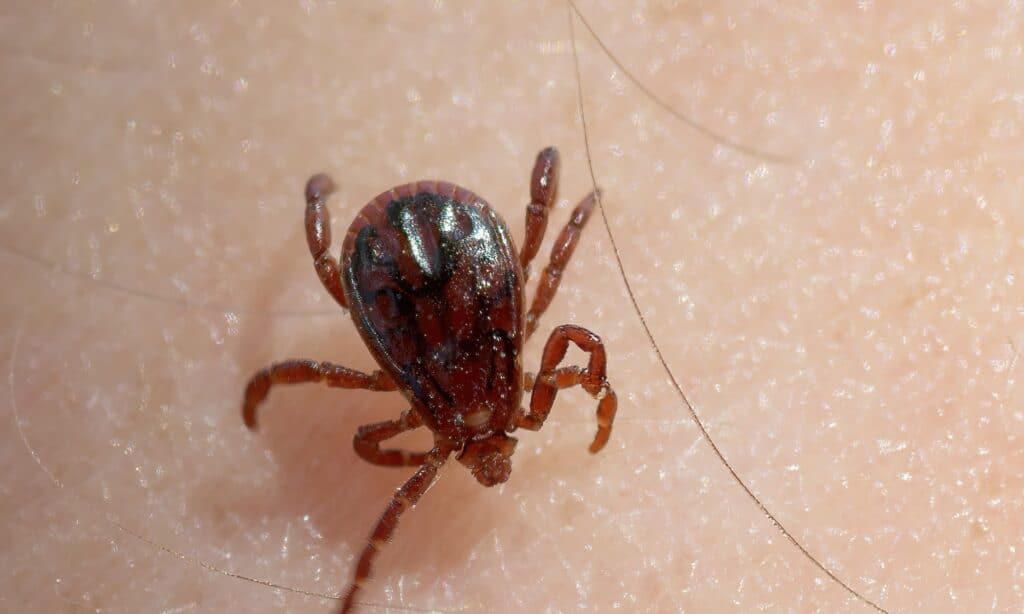
Unlike other tick species, brown dog ticks live almost entirely indoors.
©iStock.com/RobertAx
Brown dog ticks are one of the most common ticks in Maryland, but you might not find them where you expect to find them. These ticks live exclusively indoors, in close proximity to dogs. Their favorite food is canine blood, but they do occasionally bite humans. These ticks spread Rocky Mountain spotted fever, as well as several canine-specific diseases. They’re found wherever there are dogs and have narrow, red-brown bodies.
When is Tick Season in Maryland?
Tick season in Maryland is from early spring to early fall. Ticks usually hatch in the spring, spend the summer and early fall months feeding, and then hibernate for the winter. They become less active in July and August when temperatures are at their highest.
Do Ticks in Maryland have Lyme Disease?
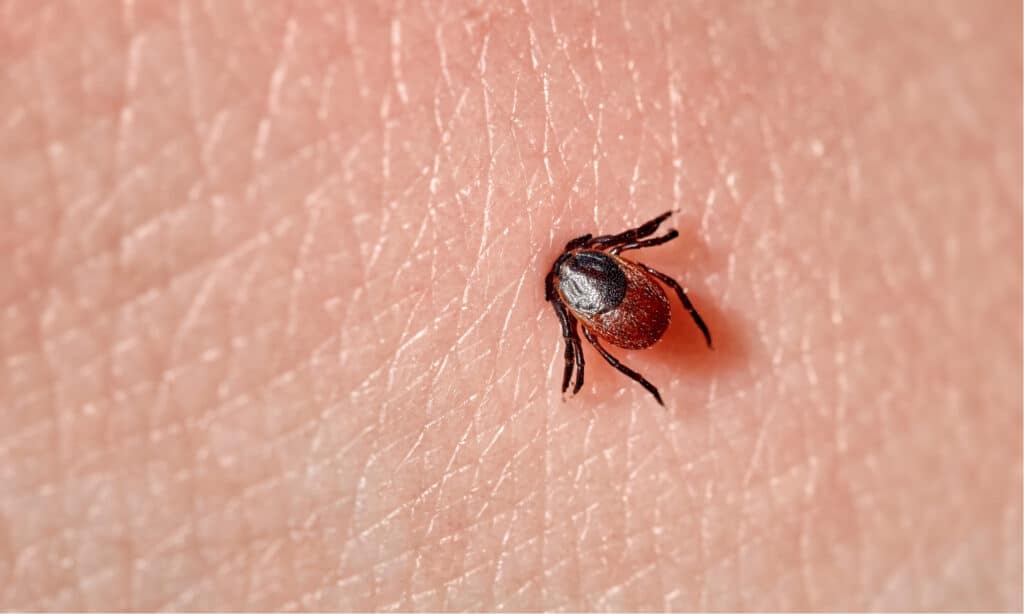
Even larval or nymph stage deer ticks can spread Lyme disease.
©Evgeniyqw/Shutterstock.com
Unfortunately, yes—there is one type of tick in Maryland that transmits Lyme disease. This is the deer tick, otherwise known as the black-legged tick. Deer ticks are the only ticks in Maryland capable of infecting humans with Lyme disease through their bite. If you’ve been bitten by a deer tick, it’s important to monitor your health closely for symptoms of Lyme disease.
Where do Ticks Live in Maryland?
Ticks in Maryland live just about everywhere. They’re most likely to be encountered if you hike through fields of grass or bushes or if you dig around the leaf litter on forest floors. But, even going indoors isn’t enough to completely get away from ticks—the brown dog tick spends nearly its entire life indoors.
The photo featured at the top of this post is © iStock.com/Goldfinch4ever
Thank you for reading! Have some feedback for us? Contact the AZ Animals editorial team.






